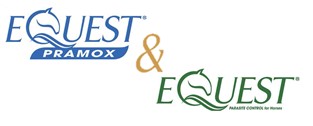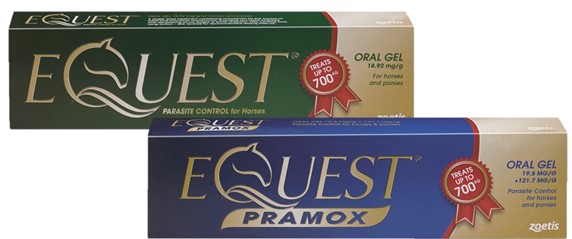Equest and Equest Pramox are the only products licensed to treat encysted small redworm in a single dose.
Small redworm are now recognised as the major parasite of concern in adult horses2.
As there is no available test to detect encysted stages of small redworm, which have the capacity to cause extremely severe disease and even death, a properly timed effective treatment is routinely recommended2.
Moxidectin lasts longer than any other worming product in the market. The egg reappearance period of small redworm is 90 days1.
Equest and Equest Pramox are licensed for use in foals over 4 months and 6.5 months of age respectively.
Both Equest and Equest Pramox are safe for use in breeding, pregnant and lactating mares1.
A single syringe treats a 700kg horse1.
Current studies suggest that resistance to Moxidectin in small redworm is less widespread than with other actives, however strategic use of all worming treatments is recommended2.
TALK TO YOUR VETERINARY SURGEON ABOUT RESPONSIBLE AND STRATEGIC USE OF WORMING TREATMENTS. MORE INFORMATION ABOUT YEAR AROUND WORM CONTROL IS AVAILABLE AT WWW.WORMINGYOURHORSE.INFO
Summary of Equest Product Characteristics: Full product licence here
Summary of Equest Pramox Product Characteristics: Full product licence here








